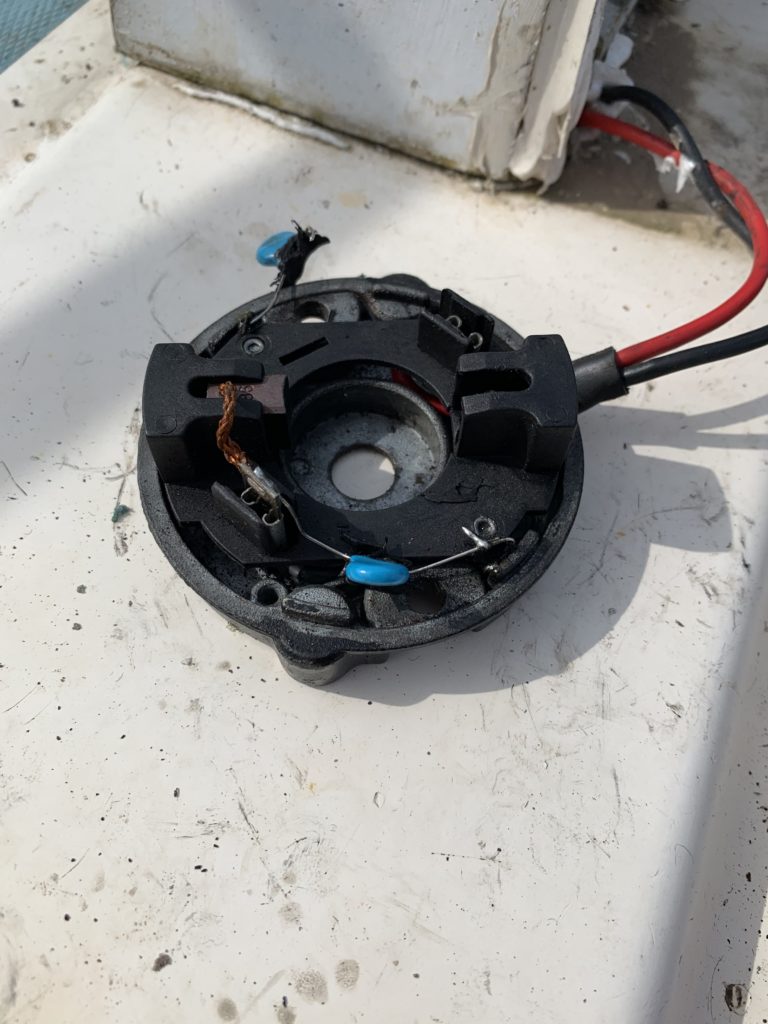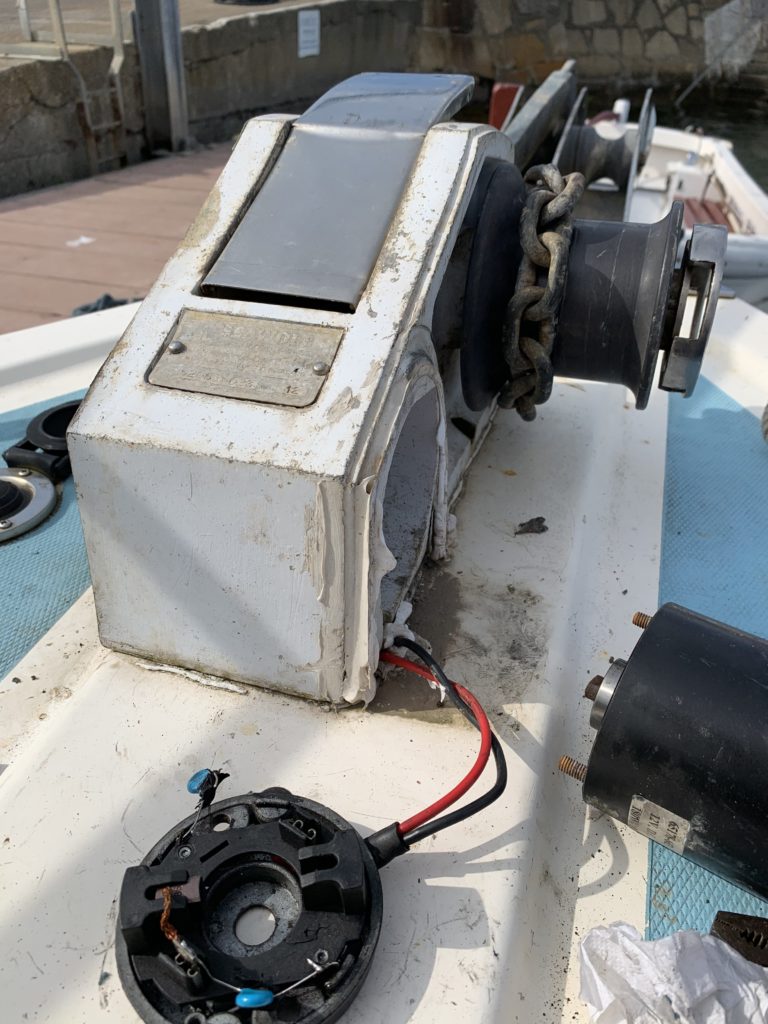The club committee boat, Hawaiian Goose (I have no idea how it got that name), has had a dodgy windlass for a while. Brian has spent the past week re-wiring it completely with large gauge cable, just in case it was a wiring fault that was causing grief.
Symptoms: Windlass will start out just fine, but even without load, it will start to spin slower and slower. Take your foot off the button, wait, and go again, and it starts and full speed and slows down. Sounds a bit like a voltage sag.
Today, as I was passing through the boat house, Brian mentioned this symptom to me, so I suggested we take 5 minutes and check for voltage sag. He’d run 25mm2 cable to the solenoid, so it shouldn’t have sagged, but it was worth checking. Hooked up the voltmeter, pressed the button, solenoid clicked.. and nothing. Not even a whirr.
We faffed with it a bit, and then decided to take it to pieces – found the manual for it online (local copy), read the disassembly instructions, and took off the motor cover and the gear cover. Hit the button again to see what would happen, nothing. Looked at the back of the motor, and noticed a bit I could grab and spin, so did that, hit the button and it spun! Success!
Well, no. It wound down just like it had before, and then wouldn’t go again. With some experimentation, we could get it to sometimes start spinning, and other times not. This felt a bit like it was getting into a position where the magnetic field was somehow “locking” the spindle, but that didn’t make sense.
This windlass isn’t made any more, and SL Spares‘ page for this windlass indicates that the motor isn’t available any more. Nothing ventured, nothing gained, so we decided to rip the motor apart and see if anything obvious showed up.
A few bits went sproing as it came apart, though thankfully none of them sproinged into the sea. Noticeably, one of the brushes didn’t go sproing on its spring – it just stayed where it was, bottomed out in the brush box. This brush box became the immediate focus of our investigation – we checked the spring, we tried to clean it, we tried putting the other brush into the box; the spring was fine, nothing major came out, and the other brush also got stuck down at the bottom of the travel.
After much musing, we cut the brush off of the capacitor (least, I think it was a cap, looked like one, ceramic), Brian introduced it to a file or sandpaper to taper it, and it went back in and moved nicely. Put back the springs, use a bit of string to hold the brushes in, put back the commutator etc, remove the string, and it spins! Moreover, it spins and spins and spins – no sign of winding down.
Put the winch back together, and noticed that once the gear was attached to the end of the motor spindle, and the cap screws were tightened, the needle bearing for the gear was binding, and we couldn’t turn the spindle by hand any more.
More faffing trying to find the right combination of screw torque; eventually got it right, put everything back together, and tested the windlass without load and then with. It’s only a 180W motor, but it worked quite happily and pulled the anchor up off of the bottom without any signs of the previous problems – Brian didn’t need to run new wires at all! However, Goose now has new wiring, all cleaned up, and a circuit breaker on the windlass, so things are better.
That 5 minute check for a voltage sag turned into over an hour of dismantling, testing, and re-assembly.

